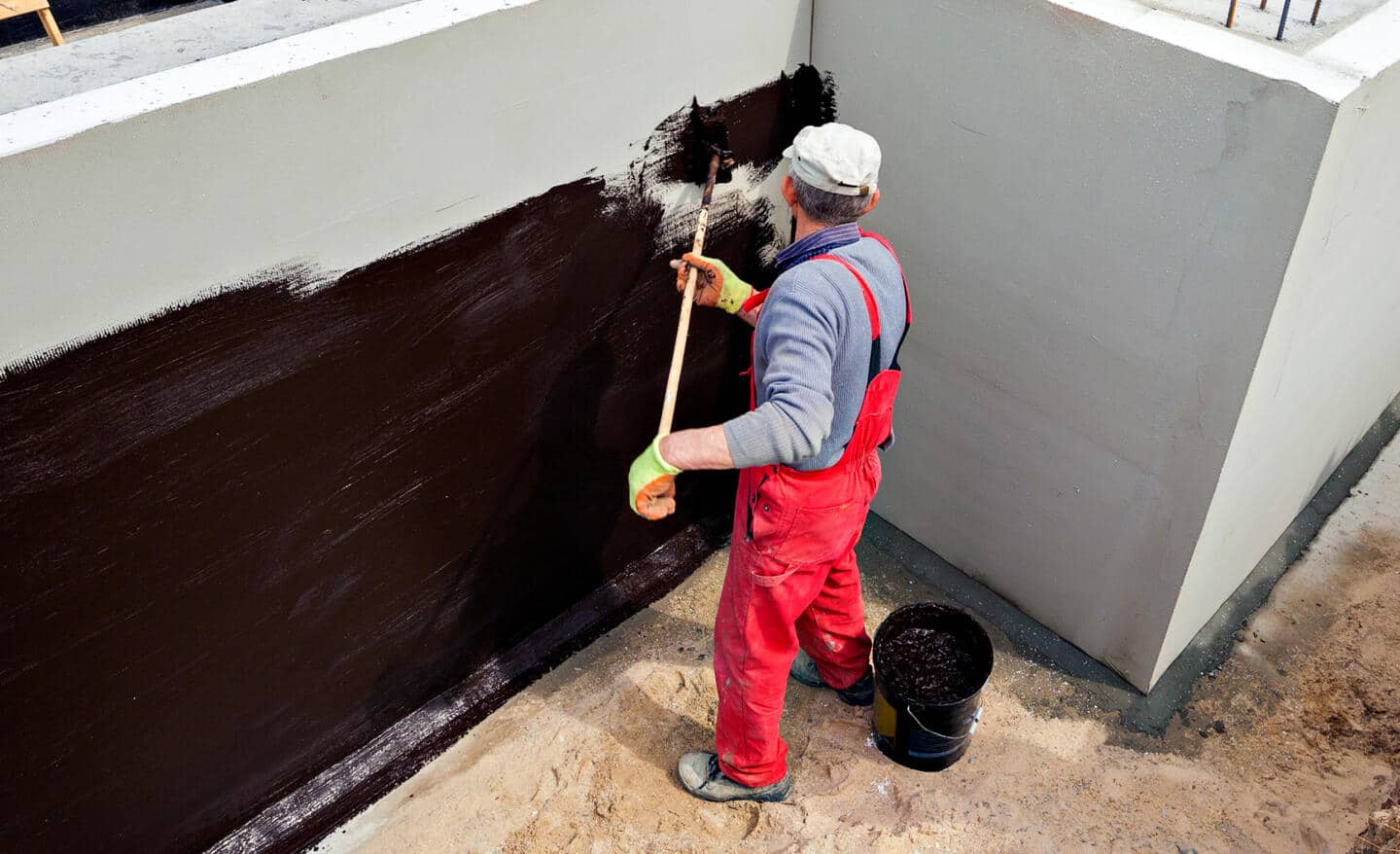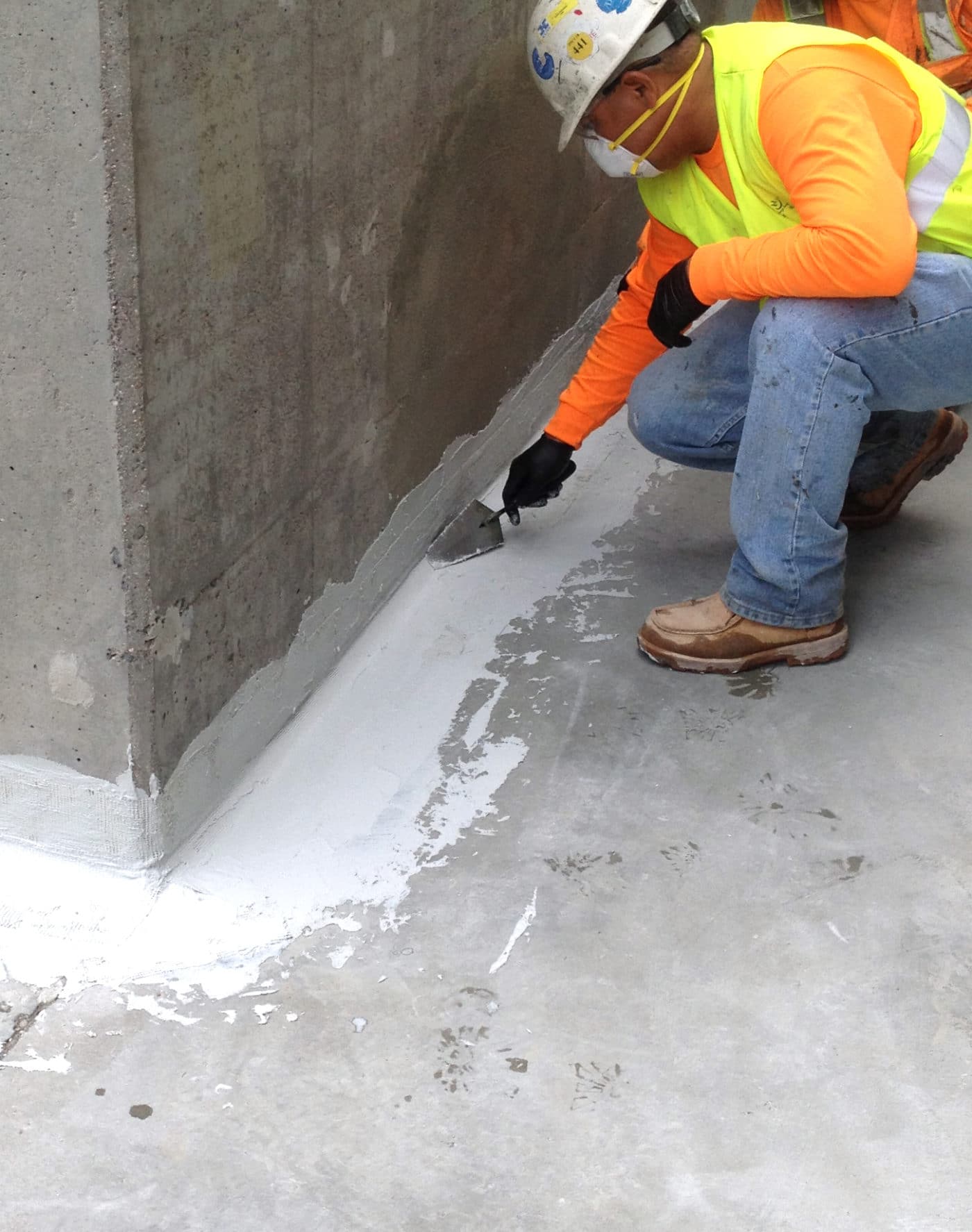How Waterproofing Works: A Comprehensive Take A Look At Techniques and Technologies
Waterproofing is important for safeguarding structures from moisture-related damage. It entails numerous strategies and innovations that produce barriers against water breach. Standard techniques, such as compacted clay, exist together with modern innovations like liquid-applied membrane layers. Comprehending the nuances of these approaches is vital for reliable application. The efficiency of any kind of waterproofing remedy pivots not only on the strategies utilized but additionally on continuous maintenance and inspection. What are the vital aspects that influence lasting performance?
Recognizing the Basics of Waterproofing
Waterproofing is an important procedure that safeguards frameworks from water invasion, which can lead to considerable damage gradually. This method entails the application of various products and techniques created to create an obstacle versus wetness. The key goal is to avoid water from permeating surface areas, which can trigger deterioration, mold development, and structural instability.Various aspects affect the choice of waterproofing approach, including the type of framework, its location, and ecological problems. Understanding the physics of water activity and the residential properties of various materials is essential in selecting a reliable waterproofing solution.Effective waterproofing not just safeguards buildings however additionally enhances their durability and honesty. Typically, it is integrated right into the layout phase of building to ensure thorough security. As recognition of water-related concerns grows, the significance of recognizing waterproofing principles becomes progressively clear to architects, contractors, and homeowner alike.
Standard Waterproofing Techniques
Standard waterproofing approaches have been utilized for centuries, counting on reliable methods and products to protect frameworks from water damages. One of the earliest techniques entails the use of clay, which, when compressed, creates an all-natural obstacle against dampness. Additionally, bitumen, a sticky, black material stemmed from petroleum, has been employed for its water-resistant properties, frequently put on roofs and foundations.Another method involves the application of lime-based plasters, which offer a breathable layer that enables wetness to escape while protecting against water access. Thatch roof, a conventional approach still seen in some cultures, uses exceptional waterproofing as a result of its tightly packed straw layers.Moreover, the use of stone and block has actually projected, as these materials are inherently resistant to water when effectively installed. Generally, typical waterproofing approaches highlight the value of selecting ideal materials and construction techniques to boost resilience versus water intrusion.
Modern Waterproofing Technologies
Advancements in modern-day waterproofing modern technologies have changed the means frameworks are safeguarded from water damage. Cutting-edge methods such as liquid-applied membrane layers and innovative sealers have boosted the effectiveness and versatility of waterproofing solutions. These modern technologies allow for seamless application, decreasing the risk of leaks and guaranteeing thorough protection over intricate surfaces.Moreover, the combination of clever technologies, such as dampness sensors and automated tracking systems, allows real-time evaluation of waterproofing performance. This positive technique helps with timely maintenance and minimizes long-term repair costs.Additionally, improvements in spray-applied layers offer quick application and superb adhesion, adapting to different substratums while giving durable defense. Techniques like polymer-modified systems further improve adaptability and longevity, making them ideal for varied environments. On the whole, modern waterproofing technologies not only minimize water invasion however also add to the longevity and sustainability of structures, noting a considerable shift in the market.
Products Used in Waterproofing
The efficiency of waterproofing services greatly depends on the materials made use of in their application. Numerous products are employed to create obstacles versus water access, each with one-of-a-kind residential or commercial properties suited for various settings. Frequently made use of products include membrane layers, coverings, and sealants.Liquid-applied membrane layers, often made from polyurethane or acrylic, form a seamless obstacle that adjusts to intricate surfaces. Sheet membrane layers, generally created from rubber or thermoplastic, offer sturdiness and are suitable for larger areas. In addition, cementitious waterproofing materials, composed of cementitious substances, give excellent bond and flexibility.Sealants made from silicone or polyurethane are vital for joints and seams, ensuring extensive security. Additionally, sophisticated materials, such as geo-composite membranes, incorporate numerous functions, boosting performance. On the whole, the choice of waterproofing materials is important in achieving lasting and reliable water resistance, customized to certain job requirements and environmental conditions.
Typical Applications of Waterproofing
Waterproofing plays an essential duty in different industries, ensuring the long life and stability of frameworks. Common applications include residential solutions that protect learn the facts here now homes, business framework that safeguards businesses, and commercial setups that need durable security against wetness. Recognizing these applications highlights the value of waterproofing in keeping both safety and capability read the full info here across different settings.
Residential Waterproofing Solutions
Lots of property owners encounter challenges with dampness breach, making effective property waterproofing options vital. Different approaches exist to resolve this problem, including exterior and interior waterproofing systems. Interior services often include the application of sealers and finishings to cellar walls, which aid avoid water seepage. Outside methods generally include the installment of drainage systems and water-proof membrane layers that draw away water away from the foundation.Additionally, homeowners might think about sump pumps to eliminate water build-up and dehumidifiers to control moisture levels. Correct grading and the usage of rain gutters additionally play an important role in managing water flow around the home. By executing these strategies, property owners can greatly lower the threat of water damages and mold development, guaranteeing a completely dry and safe living setting.

Industrial Infrastructure Defense
Efficient waterproofing options play a critical duty in the security of commercial infrastructure. Yard drainage Omaha. These strategies are important for safeguarding structures, parking structures, and bridges from water damage, which can jeopardize structural stability and lead to costly repair services. Common applications consist of the installation of membrane layers, finishes, and sealants that produce obstacles against dampness seepage. Areas such as basements, roofing systems, and exterior walls are typically prioritized to ensure long life and toughness. Additionally, over here waterproofing systems can boost energy performance by stopping water-related problems that may cause mold and mildew growth and wear and tear. By implementing robust waterproofing measures, property proprietors can safeguard their investments and preserve operational efficiency, inevitably adding to the general sustainability of business centers
Industrial Applications Introduction
While numerous markets encounter distinct challenges, the need for dependable waterproofing options continues to be a consistent in commercial applications. Industries such as manufacturing, construction, and power frequently encounter atmospheres where moisture direct exposure can threaten structural integrity and functional performance. In manufacturing facilities, waterproofing is vital for safeguarding equipment and products from water damage. In building and construction, it safeguards structures and basements versus groundwater seepage. The energy industry relies upon waterproofing for the defense of equipment in hydroelectric plants and offshore frameworks. Furthermore, food handling sectors make use of waterproofing to guarantee health and conformity with safety standards. Generally, efficient waterproofing remedies are crucial for enhancing resilience, safety and security, and productivity throughout numerous industrial setups.
Upkeep and Long Life of Waterproofing Solutions
Waterproofing remedies are designed to use long-term protection against wetness invasion, regular maintenance is crucial to guarantee their performance and longevity. Regular assessments play a significant role in identifying prospective issues such as cracks, peeling, or signs of water damages. Attending to these problems promptly can prevent more wear and tear and pricey repairs.Additionally, cleaning up the surface of waterproofed locations helps remove dirt and particles that can endanger the honesty of the waterproofing obstacle. It's also a good idea to reapply protective finishings or sealants as recommended by producers to maintain suitable efficiency. Ecological factors, such as UV direct exposure and severe climate condition, can affect the life-span of waterproofing products, making normal evaluation important
Regularly Asked Questions
Can Waterproofing Be Applied in Winter?
The inquiry of using waterproofing in winter raises problems about adhesion and curing. Several products may not carry out at their best in reduced temperatures, necessitating careful option and factor to consider of details standards for reliable application.
How Much Time Does Waterproofing Normally Last?
The period of waterproofing efficiency varies based upon products and ecological elements. Generally, it can last from five to 10 years, yet routine maintenance and evaluations are important to assure peak performance and long life.
Is Do It Yourself Waterproofing Effective and Safe?
The efficiency and safety and security of DIY waterproofing rely on different elements, including worldly top quality and application strategy. While some people achieve adequate results, others might experience issues that endanger long-lasting protection and architectural stability.
What Are the Indicators of Failing Waterproofing?
Indications of stopping working waterproofing include visible water stains, peeling off paint, mold and mildew growth, musty odors, and wetness in wall surfaces or ceilings - Yard drainage Omaha. These indications suggest jeopardized obstacles, requiring prompt evaluation and potential removal to avoid more damage
Exactly how Do I Choose the Right Waterproofing Service Provider?
